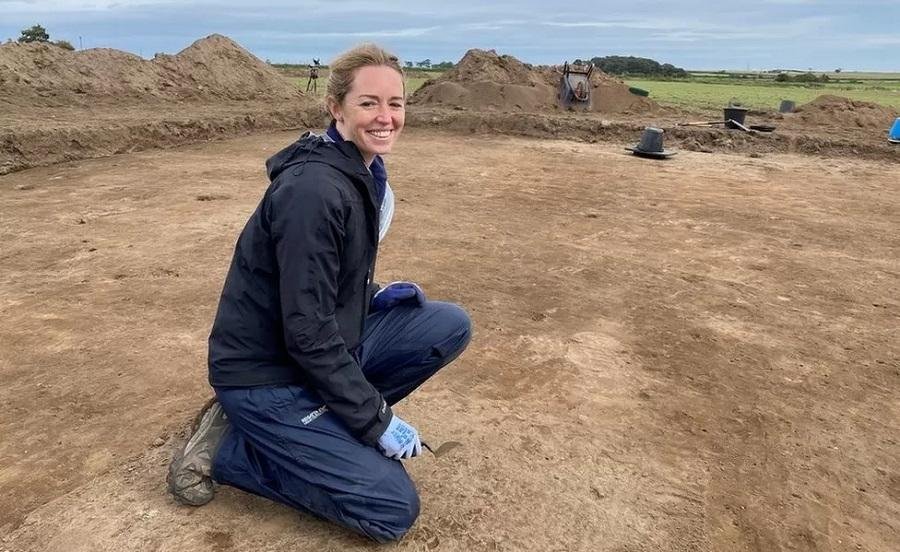A dig is taking place in Northumberland with hopes of discovering a Viking Great Army camp, BBC News reported
The dig’s leader, Dr Jane Kershaw from Oxford University, believes it was used by the famous commander Halfdan to launch attacks on the Picts.
 Dr Jane Kershaw believes the site was used by the Vikings in the 9th Century. Credit: BBC
Dr Jane Kershaw believes the site was used by the Vikings in the 9th Century. Credit: BBC
Several artifacts, including lead gaming pieces and copper coins known as stycas, have been discovered there using metal detectors throughout the years.
Volunteers are also helping out at the site, which Dr. Kershaw says could have been a “town of tents” in the 9th century.
“They found some incredible finds that can really only belong to the Viking Great Army and their activities in the 870s ,” Dr Kershaw told BBC Radio Newcastle.
“I don’t think we are looking at many structures that would leave lots of archaeological traces because they are only here for a short amount of time.”
She stated it would be difficult to put a number on those who were there but believes the site could have spanned between 20 and 50 hectares.
“It’s not just the warriors who are here but a whole kind of people who were involved in supplying and maintaining the camps – you are not on mission a lot so I think there’s a lot of sitting around, hence the gaming pieces we have found,” she explained.
“What we haven’t found yet is any silver – I think everyone would be very happy if we found some silver.”





